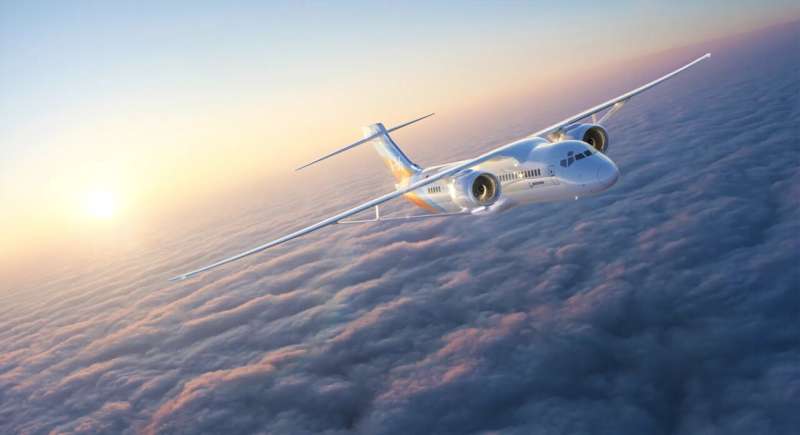This article has been reviewed according to Science X's editorial process and policies. Editors have highlighted the following attributes while ensuring the content's credibility:
fact-checked
trusted source
proofread
New look at NASA Boeing sustainable experimental airliner

As NASA and Boeing enter the early stages of producing the X-66, the first X-plane specifically focused on helping the United States achieve net-zero aviation emissions by 2050, the team is already picturing what the aircraft will look like soaring above the clouds.
A new rendering of the X-66 from Boeing demonstrates the aircraft's signature extra-long, thin wings stabilized by diagonal struts, known as the Transonic Truss-Braced Wing concept. When combined with other advancements in propulsion systems, materials, and systems architecture, this configuration could result in up to 30% less fuel consumption and reduced emissions when compared with today's best-in-class aircraft.
Under the Sustainable Flight Demonstrator project, Boeing will work with NASA to build, test, and fly the full-scale X-66 demonstrator aircraft. The project seeks to inform a new generation of more sustainable single-aisle aircraft—the workhorse of passenger airlines around the world. Boeing transported the MD-90 aircraft that will be turned into the X-66 to its Palmdale, California facility last year, and has removed its engines as the modifications started.
The X-66 is a key part of NASA's Sustainable Flight National Partnership, through which the agency seeks to protect the environment, grow the U.S. economy, and provide new innovations for the traveling public.


















